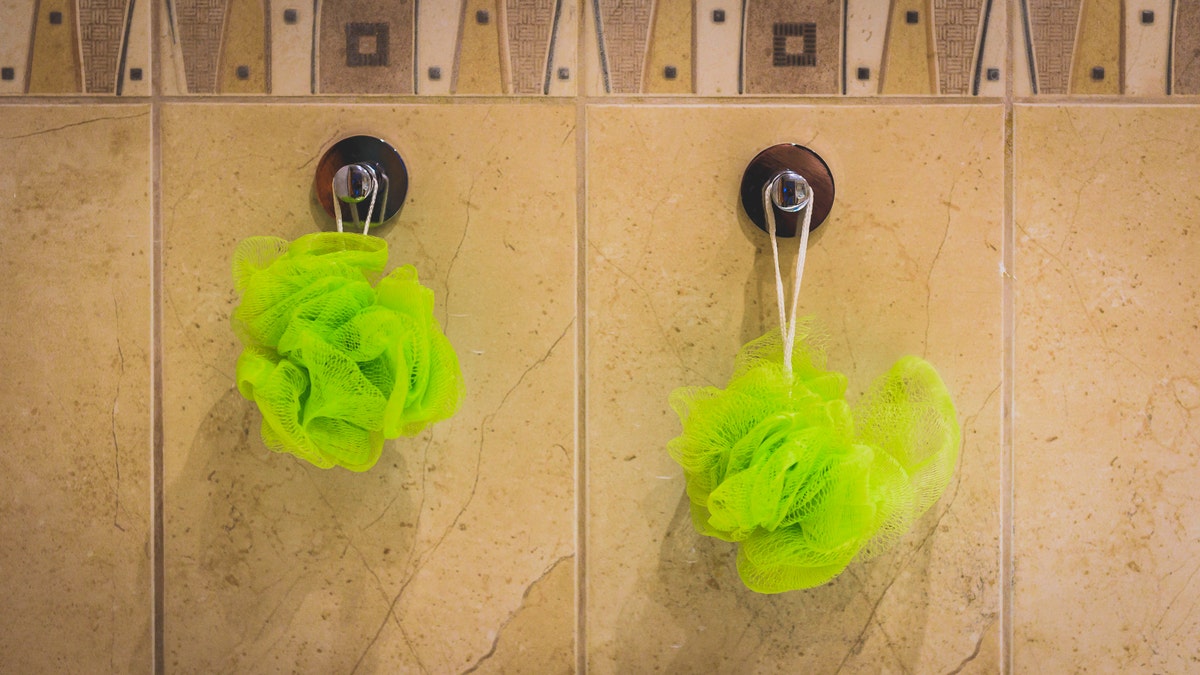
Two green bath sponges hanging from the bathroom wall. Bath accessories hanging from bathroom tiles. (_jure)
What if we told you the very thing you thought was giving you clean, silky skin was actually a breeding ground for bacteria? Here’s the unfortunate truth: Loofahs aren’t the shower saviors they appear to be. That’s because dead skin cells get tangled in the nooks and crannies of the loofah after you use it to scrub your skin. “Then, you put them in this environment in the shower that’s warm and moist and gross, and it’s a set up for bacteria, yeast, and mold to grow in the loofah,” says J. Matthew Knight, M.D., an Orlando-based dermatologist with Knight Dermatology Institute.
An infamous study published in the Journal of Clinical Microbiology found loofahs host a wide range of bacterial species, and bacteria overgrowth literally happens overnight. But wait, it gets worse: If you use the germ-filled loofah over your just-shaved skin, bacteria has a chance to slide into any nicks, which can lead to irritation and infection. That’s why Knight estimates 9.8 out of 10 dermatologists would recommend against using a loofah.
RELATED: YOU'LL NEVER BELIEVE WHAT THE DIRTIEST SURFACE IN YOUR BATHROOM IS
Not the news pouf lovers want to hear. If you can’t imagine a shower without your loofah, you can stay loyal to it—just take extra precautions to ensure it’s super-duper clean. Start by replacing it frequently—every three to four weeks for the natural kind and every two months for a plastic pouf, says Sejal Shah, M.D., a New York-based dermatologist and RealSelf contributor. Push that timeline up the second you notice spots of mold growing on it or if the loofah starts to develop a musty, mildewy smell, says Shah.
To make it last longer, don’t leave the loofah in the shower, where the moist environment encourages bacteria to grow. Instead, let it dry somewhere where it’s less humid, such as by an open window. If it’s a real luffa plant (and not plastic), you can also disinfect it with bleach, suggest the researchers behind the Journal of Clinical Microbiology study. Shah recommends soaking it in a diluted bleach solution for five minutes once a week.
RELATED: HOW MANY TIMES CAN YOU USE A BATH TOWEL BEFORE IT NEEDS TO BE WASHED?
You could also consider swapping your loofah for a washcloth. If you leave it in the shower, though, it’ll be just as nasty as a loofah, says Knight. But it’s much easier to throw it in the laundry after you use it and its straightforward shape doesn’t give bacteria the chance to get trapped, so it could be a more sanitary option.







































